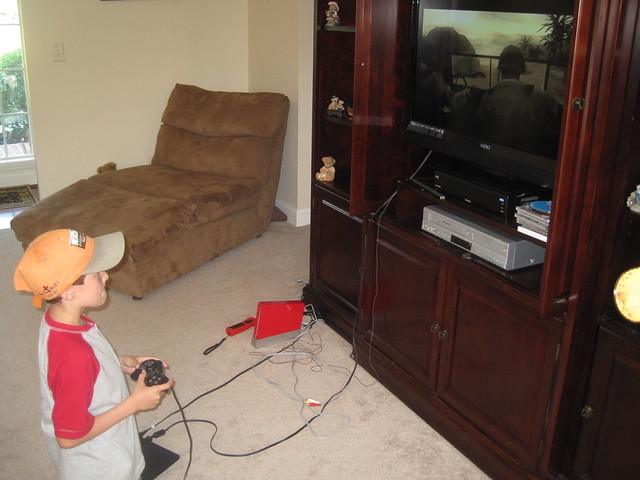A new study published by BYU professors shows a positive correlation between the amount of profanity in youth video games and TV shows and aggressive attitudes.

Photo Credit: heatherdeans24photostream/flicker.com
The study took place in Missouri starting last April and polled 223 middle-schoolers to determine their top three favorite video games and TV shows they play and watch. With this information in mind, the researchers then compared the middler-schoolers’ tendency for profanity and aggression and the amount of profanity in their media.
Sarah Coyne, a professor from the School of Family Life, was one of four professors who conducted the study.
The study, Coyne said, pointed heavily toward a direct causation between profanity in the students’ media and their tolerance and usage of profanity.
“The results overwhelmingly suggest that the students who consume media with profanity have a more supportive attitude toward it,” Coyne said.
Coyne also said the study showed the effects didn’t stop there, but that the tolerance created in the students led to a predictable chain reaction of behaviors.
“Tolerance of profanity led to more use of profanity, which then led to physical and/or relationship aggressive behavior,” Coyne said. “We checked the reverse to see if perhaps children who are OK with violence tend to seek out violent games, but it didn’t stand up under the test.”
The games the youth reported using the most included Halo, Call of Duty, Wii Sports, Mario Kart and Super Smash Brothers. The TV shows varied widely.
John Bradford, 26, said he feels that although profanity may have an effect on youth, he does not think media violence converts into actual violence.
“My passion for Super Smash Brothers has never encouraged me to exchange blows with another person in real life, whether friend or foe,” Bradford said.
Kevin Pace grew up in California and is majoring in Linguistics. As a self-professed avid gamer, he disputes via a Facebook comment the idea that video games influence outward behavior in children.
“My aggression is fueled by the real world, not the virtual world,” he said. “Real people are the ones who make me mad.”
Both Bradford and Pace said they find a release in media violence rather than encouragement.
However, as Bradford said, the world of video games and television today is different than for those who grew up in the ’80s and ’90s.
“Back in the ’80s most games were 2D side-scrollers and the object was to kill bad guys,” he said. “When N64 came out, I embraced giving 3D beatings to bad guys, but the motivation was the same as in the side-scrollers: someone needed rescuing or the world needed saving.”
Bradford said that until recently, games embodied this “good vs. evil” complex that often gave users a morale boost and a feeling of heroism.
“Games didn’t have swear words or violent scenes until recently,” he said. “I never encountered indecent games until XBOX 360 showed its face and today, for the first time ever, the player can actually be the bad guy in games.”




